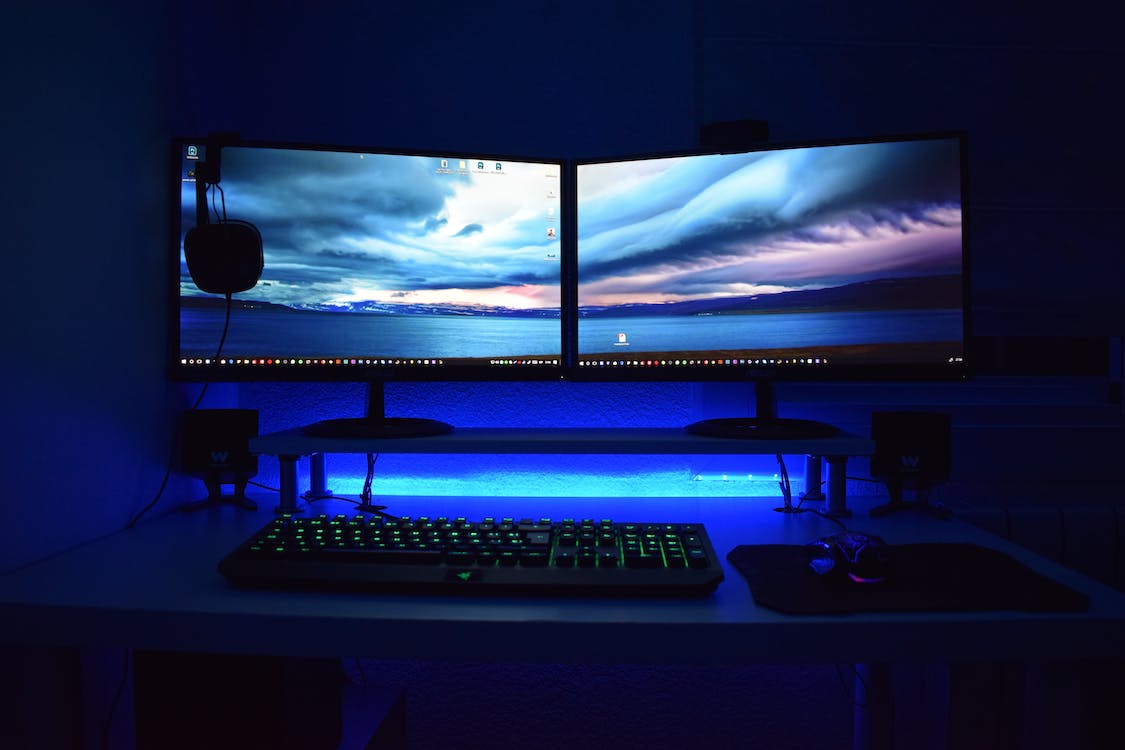The Importance of a PC Hardware Refresh
by siteadmin

Refreshing hardware allows your company to stay atop of new technology and increase productivity. Using older systems can also become ticking time bombs for cyber-criminals who target out of date machines.
Hardware refresh is the best option for increasing capacity, speed and performance to meet business needs. Keeping documentation on your hardware refresh process allows you to plan better.
Processors
The central processor is arguably the most important part of your computer. It takes in program instructions and performs trillions of calculations to output what the user will interact with on screen. Without a proper CPU, your computer may slow down or even become unusable. Thankfully, there are many options to help you keep your technology up-to-date and running efficiently.
One of the most common ways to update your business technology is with a processor upgrade. However, you must be careful not to jump in too early as this can damage your hardware. Generally speaking, you want to refresh your hardware every four years. This will allow you to get the most value from your devices and also make it easier to plan for future upgrades.
When you upgrade your processor, it will boost the speed of your overall system. This will result in faster load times for all applications and improved performance when running multi-tasking software. You can check your processing power by using a third-party benchmark test to see if you have any issues.
Modern processors have special functions and instructions that older ones simply can’t handle. This means that they can perform “tricks” that improve efficiency, provide security checks, help with memory and storage management, etc. However, this can also mean that your old device might not be able to support certain newer operating systems, hardware or software.
Ultimately, updating your business hardware can help you save money and increase productivity in the long run. This will prevent you from having to spend time and resources fixing or replacing damaged hardware, which can negatively impact your employees’ workflow. Moreover, having up-to-date technology can help you stay secure and minimize risk from cyber attacks.
Memory
The hardware refresh cycle is a critical one in the world of IT infrastructure. A full refresh replaces the entire suite of storage servers and related devices, with a new suite of more powerful ones in their place. Refreshes are usually conducted every three years or so, depending on IT budget and personnel constraints. When deciding when to refresh, an organization should analyze the current speed, reliabilities and functionality of its current IT infrastructure to determine whether it can support a storage expansion or upgrade before the original equipment manufacturer (OEM) warranty expires.
Several early computer memory technologies required periodic processes similar to memory refreshing. For example, Williams tube memory was a capacitive memory in which bits stored in each cell would decay over time unless the cells were refreshed. Similarly, magnetic-core memory retained data only as long as the memory cells were not read; each reading of a memory cell caused a temporary loss of the contents of that cell. During a refresh, external circuitry reads each memory cell and rewrites it with the same value, thus reversing any changes that occurred since the last refresh.
Each bit of memory in a DRAM chip contains either a positive or negative electrical charge on a small capacitor. As time passes, the charges in these capacitors leak away, causing the memory to become unstable. Refreshing a DRAM chip involves a complex process that consists of a series of refresh cycles. During a refresh, the chip address bus lines are used to signal an external counter to read and rewrite each row of memory cells. The RAS (Row-Address Strobe) register is incremented with each cycle. Some early microprocessors, such as the Zilog Z80, included internal registers that could generate a RAS refresh. In later chips, this function was incorporated into the CPU.
Hard Drives
The hard drive is the medium that stores the information your computer uses. It is composed of a platter that holds data inscribed on tiny tracks, similar to the records used in a record player. It also has a read and write head that move across the platter to access the data. The disk spins, and the head reads and writes by changing the electrical state of the bits. This method is very fast and has led to the proliferation of HDDs in computers.
HDDs require a lot of power to operate, and they can suffer from mechanical failure if they are impacted by uncontrolled shutdown, power surge, or sudden removal. They also need to be stored in a cool, dark, dry place away from magnetic interference.
When a computer’s hard drive fails, the data it contains is often lost. This can cause significant productivity losses and can even result in legal penalties for companies that fail to keep backups. To avoid these issues, it’s important to upgrade your organization’s hardware on a regular basis.
Hardware refreshes can seem like a daunting task. There are many considerations to take into account, including cost, suitability, and integration. Thankfully, there are IT experts available to help you manage the entire process.
A seasoned IT professional can provide advice and recommendations based on your organization’s needs, business landscape, and long-term goals. They can also ensure that your new hardware is compatible with your existing technology infrastructure. In addition, an IT partner can recommend any necessary upgrades or modifications that may be required. For example, adding additional RAM will allow your employees to work faster and more efficiently, while a solid-state drive (SSD) will increase your computer’s speed.
Graphics Cards
The graphics card is the component that turns the digits on your computer's CPU into the visuals you see on the screen. The software known as the graphics driver essentially tells your computer how to do this.
The memory in a graphics card is called video RAM (VRAM). It serves the same purpose as regular RAM, storing data about each pixel and its color and where it should appear on the screen. The difference is that video RAM runs at much higher speeds and is dual-ported, allowing the card to read from and write to it at the same time.
High-end video cards can create complex 3-D images at very high resolutions. One of the ways they measure how well they can do this is by measuring how many triangles or vertices they can compute per second, a measurement that indicates how quickly they can build a wire frame image.
Graphics cards come in multiple flavors, depending on how they are designed to be used. The most common type of GPU is an external device that slips into a slot on the motherboard known as an expansion slot. This kind of card allows you to upgrade it as newer models become available. The other type of graphics card is built into the motherboard and can't be replaced.
Most people won't need a GPU for their day-to-day work, but those who play the latest games or use demanding software might want to consider investing in an upgrade. Nothing is more frustrating than trying to play a game and having it lag or crash, or seeing odd glitches on the display. You can check for GPU problems by running a diagnostic test in Windows.
Networking
In a modern business environment, it is vital that employees have access to the best technology in order to perform their jobs efficiently. When equipment starts to slow down or experience a lot of glitches it can cause a huge impact on productivity. A hardware refresh can provide your business with newer and more efficient technology that will help boost employee morale.
Another reason to consider a hardware refresh is that older devices may start to become insecure. Newer hardware is built with security features that protect against many common cyber threats. Older hardware, on the other hand, can be more vulnerable to attacks because hackers have already discovered how these devices work. Keeping your equipment up to date will reduce the number of times you will need to call in an IT tech to fix or replace your machines.
Depending on the type of business and your purchasing approach, the hardware refresh cycle might differ. However, a refresh should always include an assessment of current technology and its capacity to support future business needs. This will help prevent a big project from taking too long or needing to be done all at once.
Whether it is workstations, servers or core network hardware, a refresh is a great way to increase efficiency and productivity in your organization. However, it is important to remember that a hardware refresh project requires a lot of planning and implementation so that the transition process can run smoothly. It is also a good idea to work with a professional during this time. They can help you with a thorough network assessment and make sure that your data is correctly transferred to the new system.
https://pchardwarerefresh.com.au/
Refreshing hardware allows your company to stay atop of new technology and increase productivity. Using older systems can also become ticking time bombs for cyber-criminals who target out of date machines. Hardware refresh is the best option for increasing capacity, speed and performance to meet business needs. Keeping documentation on your hardware refresh process allows…
Recent Posts
- The Septic Guys – The Go To For Septic Pumping Fresno
- Expert Cleaners Lexington: Setting New Standards in Quality Assurance and Flexibility
- Professional Scottsdale Landscaping Offers Expert Yard Clean-up Services in Phoenix
- RISE Nutrition & Wellness: Transforming Lives through Online Macro Coaching
- Best Irvine Movers: Your Trusted Local Moving Service in Irvine
